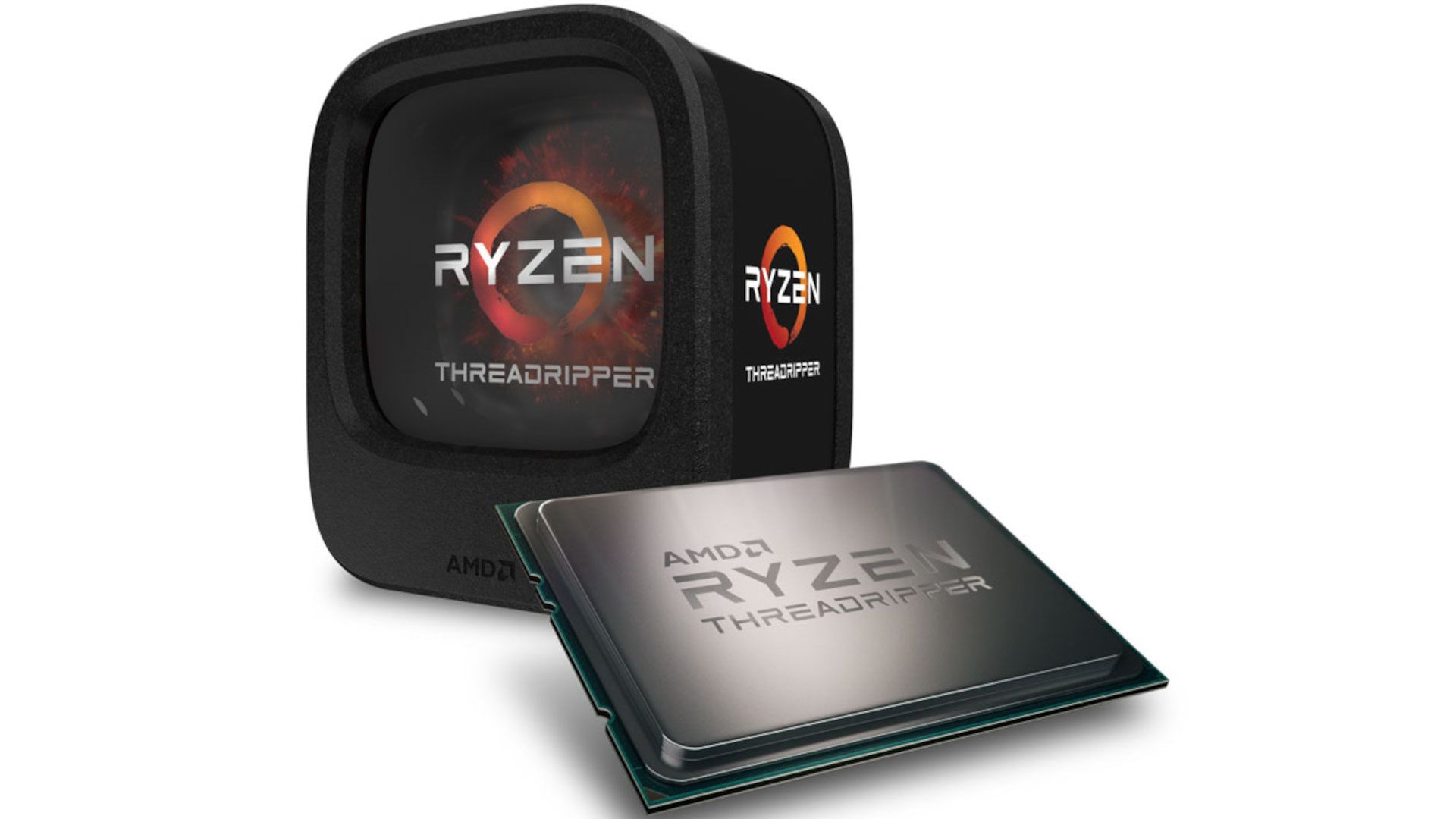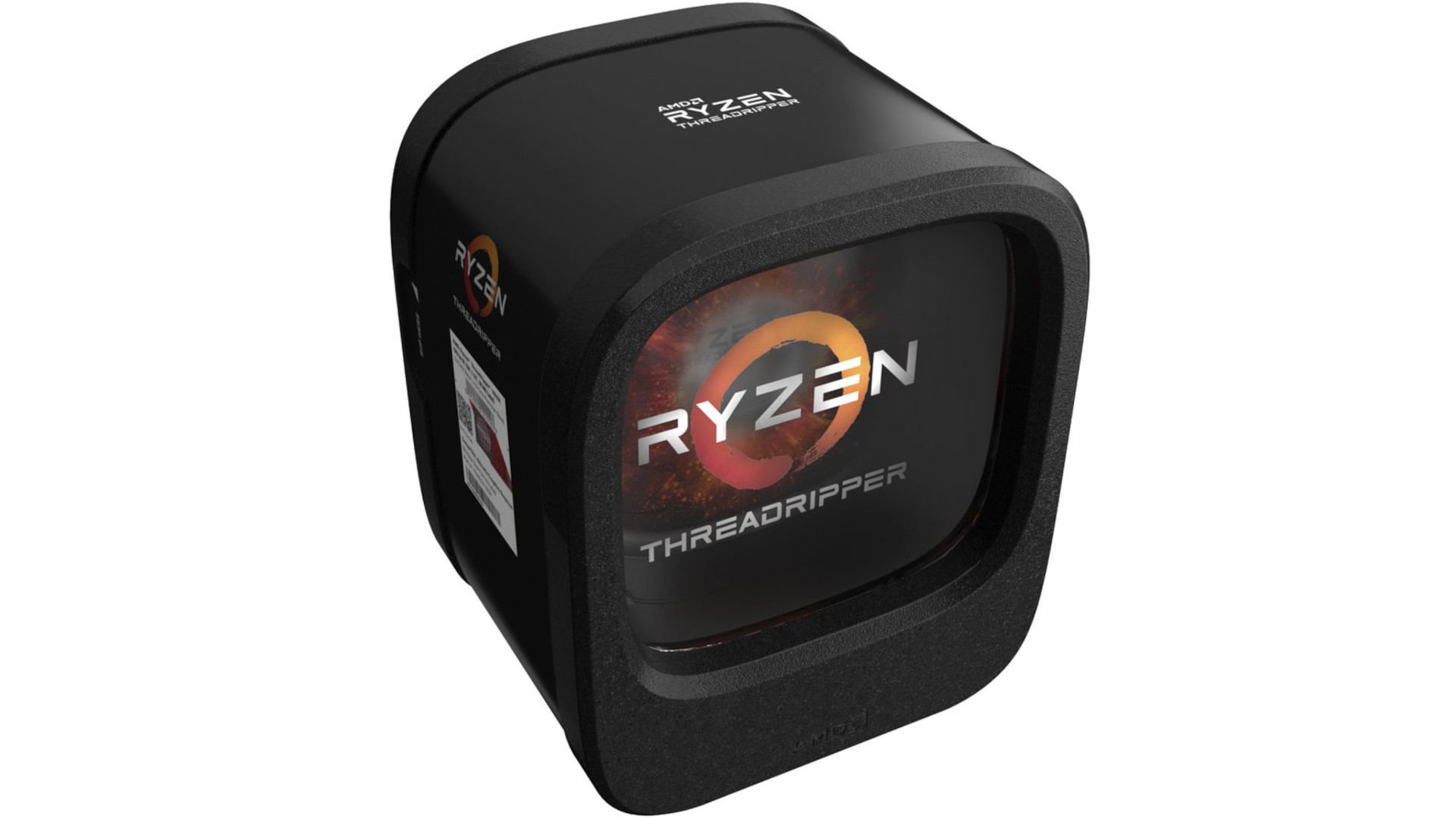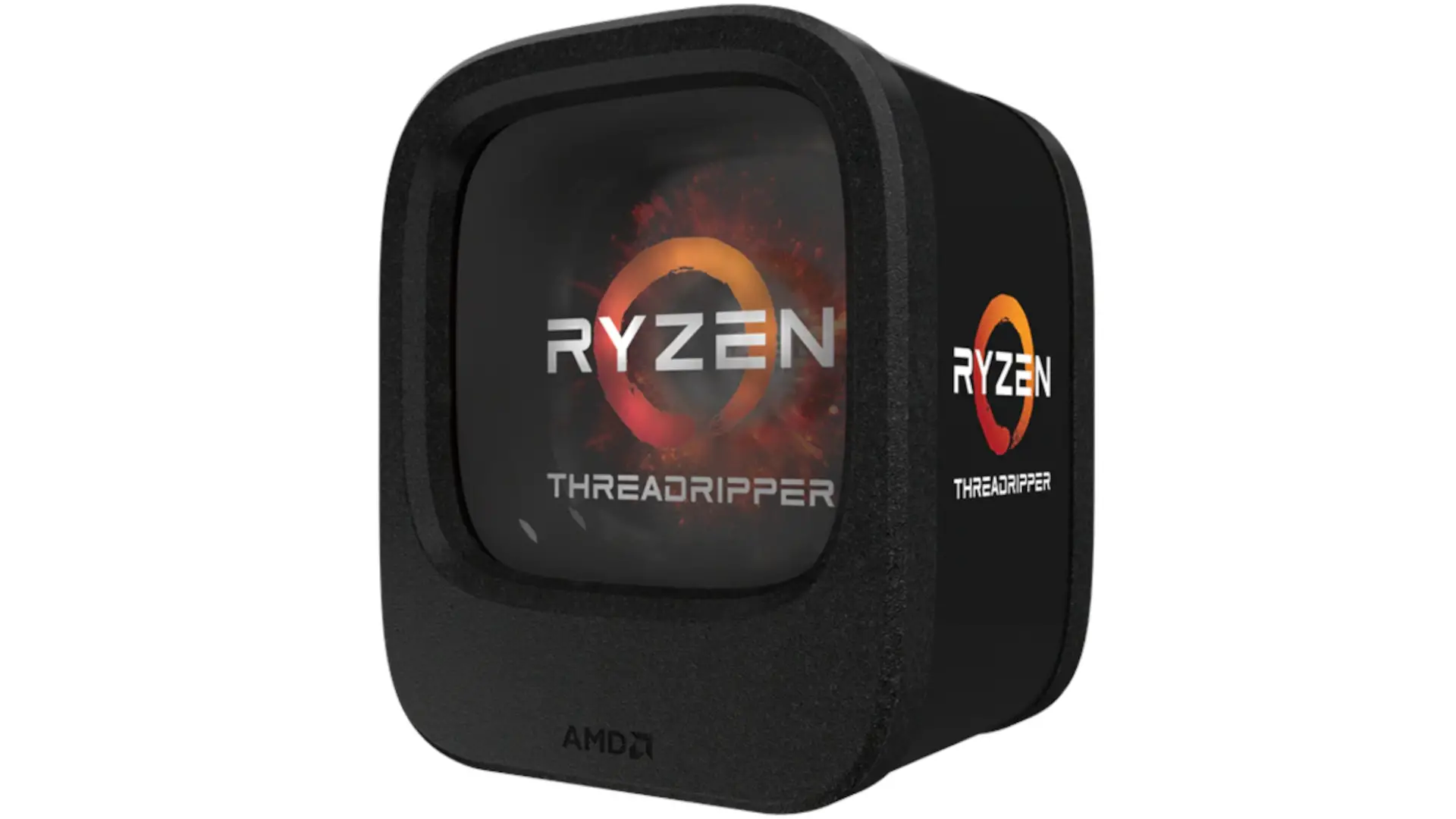AMD’s Ryzen Threadripper 1950X gave its high-end desktop ambitions a boost. The company’s latest lineup pits Intel against itself. However, the mid-range machines in AMD’s product line continue to offer some of the finest value. The AMD Ryzen TR 1920X has 12 physical cores, SMT, 64 lanes of PCIe, a quad-channel memory controller, and 38 MB of cache, allowing it to support 24 concurrent threads. All of it costs $800 (on release), which is significantly less expensive than the 10-core Core i9-7900X.
The back-and-forth we’ve seen this year suggests that Intel may have been taken off guard by the Ryzen series of CPUs. Lower costs, more cores, less segmentation, soldered heat spreaders, less expensive motherboards, and a longer commitment to each platform are among AMD’s seductive calls to enthusiasts.
Although Intel does offer more expensive Skylake-X choices, these models suffer from purposeful segmentation that cuts off native functions on the less expensive variants. Don’t write off Intel, though; its most powerful Skylake-X chips and a barrage of mainstream Coffee Lake CPUs to compete with Ryzen 7, 5, and 3 are still on the way.
AMD should continue to be a competitive force to be reckoned with because of its aggressive roadmap it will utilize to enhance the Zen architecture and go to lower nodes. However, AMD Ryzen TR 1920X is a fantastic beginning. This processor should perform admirably at a fair price and have the highest Ryzen processor overclocking ceiling, based on the 1950X that we previously tested.
AMD Ryzen TR 1920X Specifications

AMD created its Threadripper CPUs for users who can make extensive use of their many cores and PCIe connectivity. Think of software developers, strong multitaskers, and content producers.
The 3.5 GHz base frequency of the 12C/24T Threadripper 1920X is only 100 MHz faster than the 16C/32T 1950X. Surprisingly, the two processors include a four-core 4 GHz setting for lighter workloads and a 3.7 GHz boost frequency for heavily threaded workloads. Both processors also offer a four-core 4.2 GHz XFR ceiling if your cooling is strong enough.
The 1920X uses two quad-core complexes merged into a single Zeppelin die, just like all of AMD’s Ryzen processors. To construct Threadripper CPUs with 16 physical cores, two Zeppelin chips are connected by an Infinity Fabric interface into a multi-chip module. AMD disables four of them to generate the 12-core 1920X, leaving six cores per die (3+3).
Dissipated heat from the active circuitry is absorbed by the deactivated cores, which operate as dark silicon. This results in remarkable overclocking headroom from our 1920X sample, along with AMD’s usage of a soldered heat spreader and aggressive binning (the company claims to use the top 5% of Zeppelin dies). With a relatively low 1.42V, we were able to maintain a 4.1 GHz overclock, the highest with any Ryzen CPU in our American lab.
AMD Ryzen TR 1920X Specs
| Platform | Boxed Processor |
| # of CPU Cores | 12 |
| Base Clock | 3.5GHz |
| L3 Cache | 32MB |
| Unlocked for Overclocking | Yes |
| Max. Operating Temperature (Tjmax) | 68°C |
| Product Family | AMD Ryzen™ Processors |
| # of Threads | 24 |
| L1 Cache | 1.125MB |
| Default TDP | 180W |
| CPU Socket | sTR4 |
| Launch Date | 7/31/2017 |
| Product Line | AMD Ryzen™ Threadripper™ Processors |
| Max. Boost Clock | Up to 4.0GHz |
| L2 Cache | 6MB |
| Processor Technology for CPU Cores | 14nm |
| Thermal Solution (PIB) | Not included |
| *OS Support | Windows 10 – 64-Bit EditionRHEL x86 64-BitUbuntu x86 64-Bit*Operating System (OS) support will vary by manufacturer. |
AMD Ryzen TR 1920X Performance

For our test setup, we installed the Ryzen Threadripper 1920X together with 32GB of G Skill Trident Z RGB RAM running in a quad-channel configuration on the Asus ROG Zenith Extreme that we previously stated. For our CPU-specific tests, an Nvidia GeForce GTX 1080 Founders Edition video card handled display output, and a Samsung SSD 960 Pro served as our boot drive. Thermaltake Toughpower Grand 1200 power supply, which is possibly overkill, was used to power the system.
First up in our testing regiment is Maxon’s CPU-intensive Cinebench R15 test, which fully threads to utilize all processor cores and threads and renders complex images using the CPU rather than the GPU. A proprietary score so indicates whether a PC is suitable for workloads that are processor-intensive. To better understand how AMD’s new chip performs in workloads with light threading, we’ve included the single-core results here in addition to the standard test that utilizes all available cores.
It’s interesting to note that in the single-core test, the two Threadripper CPUs were virtually tied. Since Intel typically has greater clock rates and better IPC (instructions per clock) than AMD, it is not surprising that the most recent generation of Intel chips performed better in that regard.
However, the Threadripper 1920X completely smashes the Core i7-6950X from last year—which was released at over twice the 1920X’s $799 price—on the multi-core test! Additionally, the Threadripper 1920X outperformed the 10-core Core i9-7900X by roughly 13% while costing $200 less. The 12-core AMD processor is off to an outstanding start. Let’s see how it performs in actual-world evaluations.

Then, using iTunes 10.6, we went to our venerable iTunes Conversion Test. This test just utilizes one CPU core, as does a lot of legacy software.
Prior to starting this single-threaded test, we were aware that AMD chips would not outperform the most advanced Intel processors. The Threadripper processors perform worse here than even the roughly $320 Core i7-7700K.
Although AMD processors are well behind here, they are not entirely left behind. We rate AMD’s performance in this area as “good enough” because there aren’t many time-consuming computing operations that are still restricted to a single computing core or thread. In any case, you wouldn’t purchase an Intel or AMD $799, $999, or even more expensive CPU to perform that type of task the majority of the time.
AMD Ryzen TR 1920X Conclusion
The majority of the functionality advertised for Threadripper 1950X are already present in AMD Ryzen TR 1920X. In addition to having higher base clock rates and more overclocking headroom than any Ryzen model we’ve tested, it is evident that it performs well in threaded workloads. You save $200 in comparison to the 1950X in exchange for four cores and eight threads. However, you also see improved performance in numerous productivity programs with light threading.

AMD promotes Threadripper as a tool for content producers, power users, and gamers who stream their gameplay to platforms like Twitch. Additionally, it claims that the processors are perfect for high-resolution gaming (a fair claim considering the anticipated specifications of a PC with a $800 CPU).
The 1920X is not designed for low-resolution gaming, especially with games that use few threads. However, rather than being constrained by graphics performance, we test at lower resolutions to reveal the differences between rival systems.
Is AMD Ryzen TR 1920X worth it?
With 12 cores and 24 threads, the AMD Ryzen TR 1920X is a first-generation Threadripper processor. Whether anything is “worth it” will rely on your budget, use cases, and particular requirements. Here are some things to think about:
Multithreaded Performance: The AMD Ryzen TR 1920X has robust multithreaded performance, which makes it appropriate for applications like 3D rendering, video editing, and content creation that benefit from several cores and threads.
Budget: Threadripper processors may still cost more than mainstream CPUs, especially if they are from earlier generations like the AMD Ryzen TR 1920X. Examine your spending limit and contrast the AMD Ryzen TR 1920X with more recent processors that fall inside that range.
Gaming: A high-end mainstream Ryzen processor (such as the Ryzen 7 or Ryzen 9) may provide greater value for your money if gaming is your major priority. Strong single-threaded performance and higher clock speeds are often more advantageous for games.
Newer Generations: Ryzen CPUs may have been launched in versions other than the ones I mentioned in my previous update. To determine whether newer models provide greater performance or features within your budget, find out about their availability and pricing.
Workload: Take into account the particular programs and jobs you’ll be using. The higher core count of Threadripper CPUs may not be completely utilized by some software, thus it’s critical to match the CPU to your workload.
Availability: You might want to look at newer models that offer better performance and features, while older models, like AMD Ryzen TR 1920X, may not be as readily available.
To make an informed choice based on the state of the market and the available products, it is advised to look up the most recent reviews, benchmarks, and pricing data. Take into account your unique requirements as well as how effectively the AMD Ryzen TR 1920X fits into the use cases you have in mind. Consider checking into the newest Ryzen Threadripper or Ryzen 9 processors if you’re willing to investigate more modern choices.
Is AMD Ryzen TR 1920X good for gaming?
A CPU with a high core and thread count, the AMD Ryzen TR 1920X is intended for high-performance computing applications. Because of its qualities, even while it can handle gaming effectively, it might not be the best option for builds that are primarily focused on gaming.
Here are some things to think about:
Multithreaded Performance: The AMD Ryzen TR 1920X is a great choice for jobs involving content production, video editing, and 3D rendering because of its ability to handle multithreaded workloads. The increased core and thread count isn’t always completely utilized by games, hence single-threaded speed is more important for gaming.
Clock Speed: Strong single-threaded performance and higher clock speeds are frequently advantageous for games. The AMD Ryzen TR 1920X base clock speed might not be as fast as certain processors designed specifically for gaming.
Cost: Even with its earlier iterations, Threadripper processors can be somewhat pricey. A high-end Ryzen 7 or Ryzen 9 processor from the mainstream range can offer greater value for your money if gaming is your main use case.
GPU Matters More: When it comes to gaming, the graphics card (GPU) frequently affects performance more so than the CPU. To maximize the performance of the Threadripper 1920X, ensure sure it is paired with a powerful GPU.
Even though the AMD Ryzen TR 1920X is capable of handling gaming, you should consider your own needs. If gaming is your main priority, AMD’s Ryzen 7 or Ryzen 9 series CPUs may offer greater gaming performance and value for your money. AMD created these CPUs with gaming in mind.
To make sure you have access to the most recent data on performance and cost, always look for updated benchmarks and reviews. Think about the overall budget of your system as well as the distribution of funds among the CPU, GPU, and other parts.
Can you overclock AMD Ryzen TR 1920X?
Like many other Ryzen processors, the AMD Ryzen TR 1920X is capable of being overclocked. The practice of overclocking entails raising the CPU cores’ clock rates in order to outperform the factory settings.
AMD’s official overclocking tool, the AMD Ryzen Master program, can be used to overclock the AMD Ryzen TR 1920X. Ryzen Master offers an easy-to-use interface for modifying a number of specifications, such as voltage, memory settings, and core clock speed.
The general procedures for using Ryzen Master to overclock are as follows:
Download Ryzen Master: The official AMD website is where you can get Ryzen Master.
Install Ryzen Master: To install the Ryzen Master program on your computer, adhere to the installation guidelines.
Start Ryzen Master: To utilize the overclocking options, open the Ryzen Master application.
Modify Settings: Ryzen Master gives you the ability to modify voltage, core clock speed, and other settings. Gradually adjust while keeping an eye on the system’s temps and stability.
Stress Testing: To guarantee stability, you must stress test your system after making any changes. Stress testing can be done with programs like Prime95 or AIDA64. Keep an eye on the temperature to make sure it stays within safe bounds.
Adjust: The process of overclocking is a loop. To get the best possible balance between stability and performance, you might need to adjust your settings.
Keep in mind that overclocking has certain hazards and can make your warranty worthless. Monitoring temperatures and making sure your cooling solution is sufficient are essential because elevated power consumption and heat generation can also affect the stability and longevity of your system.
What temperature should an AMD Ryzen TR 1920X run at?
The AMD Ryzen TR 1920X has a maximum operating temperature (Tjmax) of 68°C, citing AMD’s official website. But according to some users, this CPU can run hotter than that—especially when it’s overclocked. As a result, it’s critical to have a reliable cooling solution for this processor, like a premium water cooler or chiller. Enermax Liqtech AIOs have also caused problems for several users; these devices have serious leakage and corrosion problems. Should you own this cooler, you might wish to swap it out for a more dependable one.
How much power does AMD Ryzen TR 1920X draw?
With a thermal design power (TDP) of 180W, the AMD Ryzen TR 1920X is a very power-hungry processor that needs a superior cooling solution. However, the workload, clock speed, voltage, and cooling system all affect the CPU’s real power usage.
When overclocked to 4.1 GHz, the 1920X can consume more than 250W of power under intense stress tests. On the other hand, power consumption might be as low as 32W when working on light or idle tasks. As a result, the power consumption of the AMD Ryzen TR 1920X might differ greatly based on the overclocked configuration and usage environment.
AMD Ryzen TR 1920X
-
Performance - 99%99%
-
Price - 96%96%
-
Value - 98%98%

